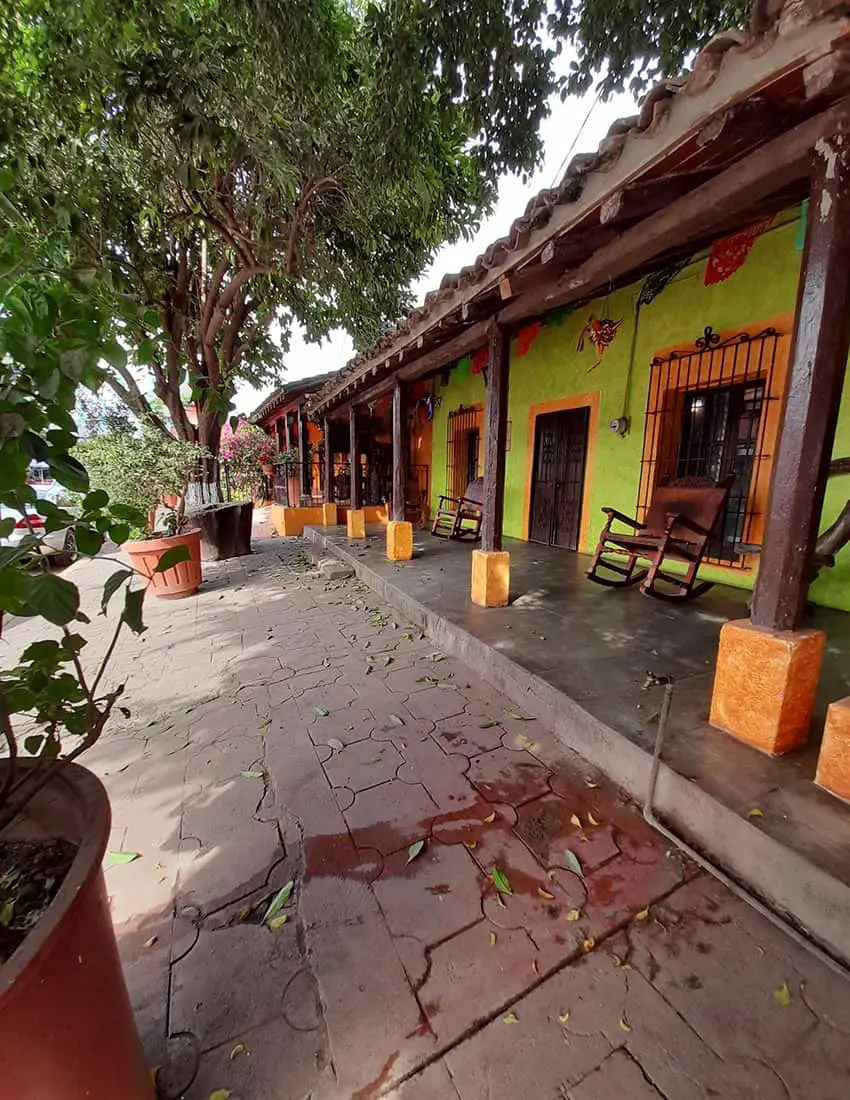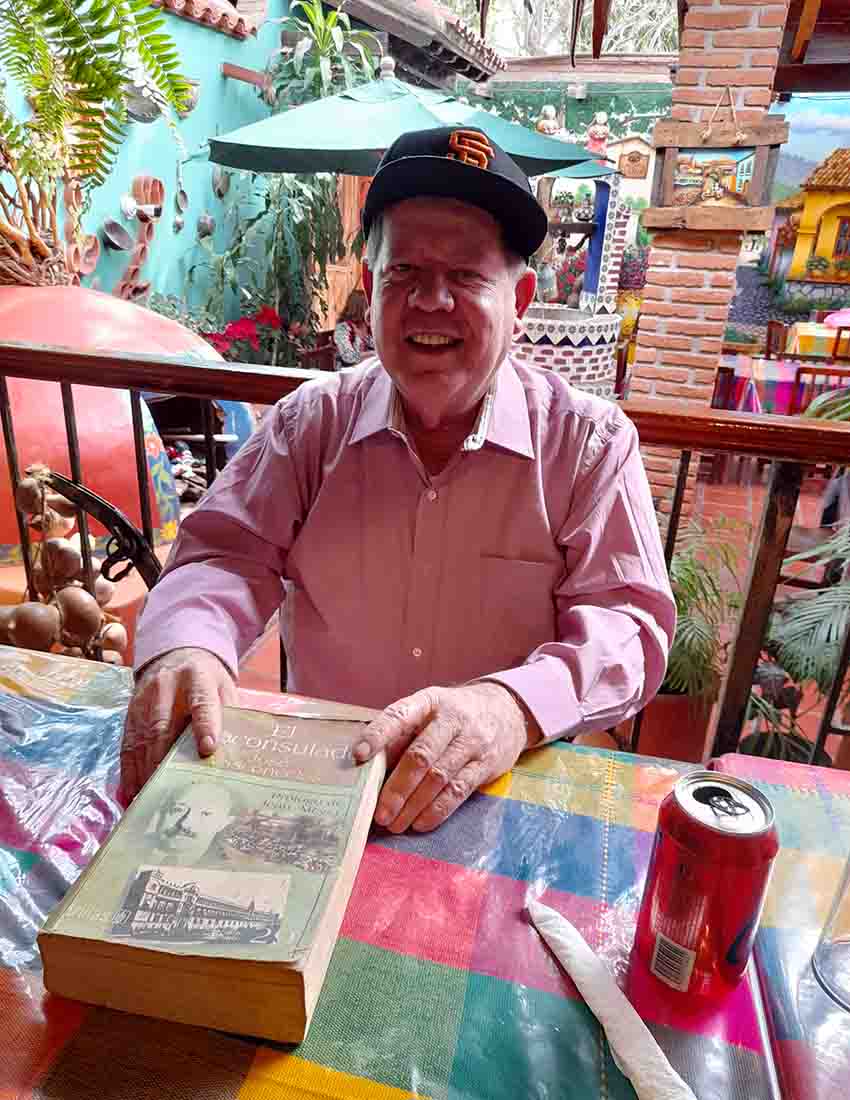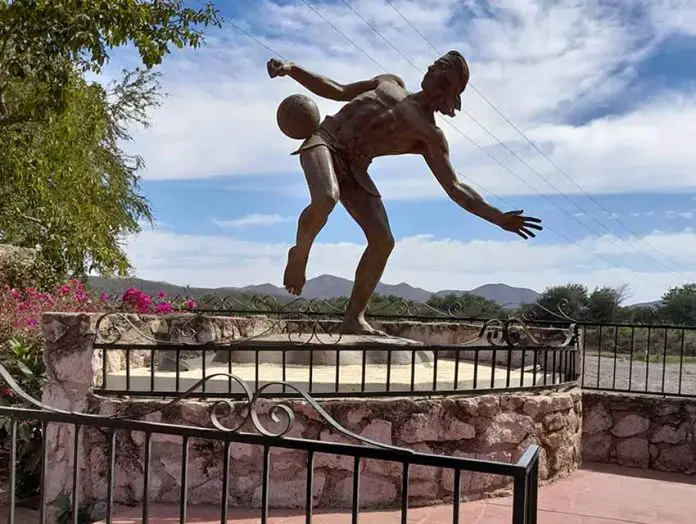Twenty-five miles northeast of Mazatlán in rural Sinaloa, on the banks of the river Quelite, sits the small colonial town of El Quelite — this place with less than 2,000 people was transformed by rural tourism thanks to the vision of one man: Dr. Marcos Gabriel Osuna Tirado.
Rural tourism is a growing industry in Mexico. It is so important that last year, the UNWTO — United Nations World Tourism Organization — held their worldwide meeting on Rural Tourism in Mexico.
The charming town of El Quelite has dressed up its authenticity with brightly painted houses, multicolored flowers and quaint artisan shops for leisurely browsing.
On the way here — about an hour’s trip — my tour guide Akino Montiel talks about the history of the area. “Quelite is from the Nahuatl word quiliti–a plant or herb that can be eaten,” he says.
Buzzards and hawks fly overhead, and agriculture is abundant.
The first thing we see upon reaching Quelite is the welcoming arch and a statue dedicated to the pre-Hispanic game of Ulama — considered the oldest continuously played team sport in the world — which is still actively played in Quelite and other small communities in Sinaloa.

We slowly meander down the streets of the town lined with tile-roofed 18th-century colonial houses painted in bright colors — most decorated with a profusion of plants and bougainvillea. Many of the houses have large porticos in front with several rocking chairs designed to while away the time watching locals pass by. Local shops offering fresh cheese and open doors wafting the smell of fresh rolls and bolillos line the street.
Our first stop is the famous El Mesón de Los Laureanos, owned by Dr. Marcos Osuna. It’s where you will find him most days of the week — supervising the kitchen, greeting friends and customers and regaling everyone with his stories of days long past.
The restaurant in the town’s center is a Spanish-style open-air hacienda. It was Dr. Osuna’s childhood home, which he transformed into a restaurant in 1998 to showcase Sinaloa’s gastronomical specialties.
Through the front door, you enter a room dedicated to Quelite’s history. On the far wall is a mural depicting the arrival of the conquistadors. Another mural depicts the Legend of Los Laureanos. Cases display artifacts of pottery and other items used by the Totorames — the largest pre-Hispanic people in the area.
The first Spanish conquistadors arrived in 1531 led by Nuño Beltrán de Guzmán who enslaved and slaughtered the Totorame and Cahue peoples he encountered as he marched through Sinaloa, decimating them. Diseases brought by the conquistadors then killed 90% of those who remained.
Nuño de Guzmán was followed in 1564 by Captain Francisco de Ibarra — considered much more benevolent. He conquered southern Sinaloa and founded towns along the way to mine the silver they discovered.
The restaurant has four large open dining rooms set with long tables. Dr. Osuna joins us at a quiet table in one of the rooms. Osuna, a gregarious man, is the “unofficial” chronicler of El Quelite — there is no official chronicler or town records.
“When I was growing up, there was no electricity or running water. We had to go to a common well or the river for our water,” he said. “I was the only doctor. Most people would use herbal remedies unless it was something more serious — then they would come to me. It was a very poor community, so if they could not afford to pay, I would not charge them.”
The local economy was — and still is — based mainly on agriculture, cattle breeding and dairy farming.
“We have the best cheeses in Sinaloa,” he says. “Quelite is famous for its food.”
I ask Osuna about the legend of Los Laureanos.

“Ah, Los Laureanos,” he says smiling. “The ringleader was José Laureano. Stagecoaches full of gold would come through here from the Sierra Madre mountains on their way to the coast.
“Quelite was a pit stop where they could re-shoe, rest and feed their horses. Los Laureanos were a gang of highwaymen who would rob the stagecoaches and use the gold to help fund the rebels in the struggle for Independence.”
I ask whether it’s a true story. He shrugs and replies, “Who knows? It is the story they tell in Quelite.”
Osuna is a pioneer in rural tourism.
“Around 25 years ago, I noticed that Mazatlecos were coming to Quelite on the weekends to get out of the city for a day. They wanted to experience rural life. So I told the people [of Quelite], ‘We’re going to paint all the houses bright colors and plant lots of flowers to attract tourists.’ Now we are like a chain of links: La Noria, Los Asuna, El Fuerte and other rural towns are all links in the chain.”
Dr. Osuna also tells me about the origin of the song “Qué Bonito es El Quelite” — popular throughout Mexico — composed by Francisco Terriquez.
“A wealthy landowner asked Terriquez to come to Quelite to form a band. While he was here, he fell in love with a beautiful young woman [Felicianna Núñez Chaná], but her father would not let them date — or even meet. Terriquez was inspired to write the corrido ‘Qué Bonito es El Quelite’ — a song about the beauty of El Quelite, unrequited love and lamenting the fact that he must leave.”
Then we eat! No one comes to El Quelite without eating at El Mesón de Los Laureanos. I order a delicious carne asada. The highlight, however, was the cheese served beforehand, the fresh tortillas and the sweet corn tamale for dessert. I now know why El Quelite is famous for their cheeses and local products.
After lunch, I walk around town and visit the 19th-century Our Lady of Guadalupe Catholic Church — named after El Quelite’s patron saint. The streets are lined with stalls of local vendors, and you share the narrow cobblestone streets with people on horseback. I sit in the beautiful palm tree-laden plaza and watch the world go by as I breathe in the peacefulness of this little oasis.
As Akino and I head out of town, he points out a stadium.
“Charros would come from all over to train there, and they would hold competitions for the entire region. It’s no longer used because it was damaged a year and a half ago by the hurricane [Nora].”
Rural tourism is having a major impact on the people of rural Sinaloa, says Osuna.
“It has not only helped the economy and people of Quelite but also people who live in rural areas around Quelite,” he said. “I hire them for my restaurant. They can now come here to sell [items to tourists].”
It’s amazing what a little paint, some bougainvillea, a little refurbishing and a visionary leader like Dr. Marcos Osuna can do to transform a rural town.
For a tour of rural Sinaloa, Akino Montiel can be reached by WhatsApp at +52 669 912 8999 or on Facebook at Around Mazatlán Tours. For more information on El Mesón de Los Laureanos visit their website www.elmesondeloslaureanos.com.mx or their Facebook page.
Sheryl Losser is a former public relations executive and professional researcher. She spent 45 years in national politics in the United States. She moved to Mazatlán in 2021 and works part-time doing freelance research and writing.
